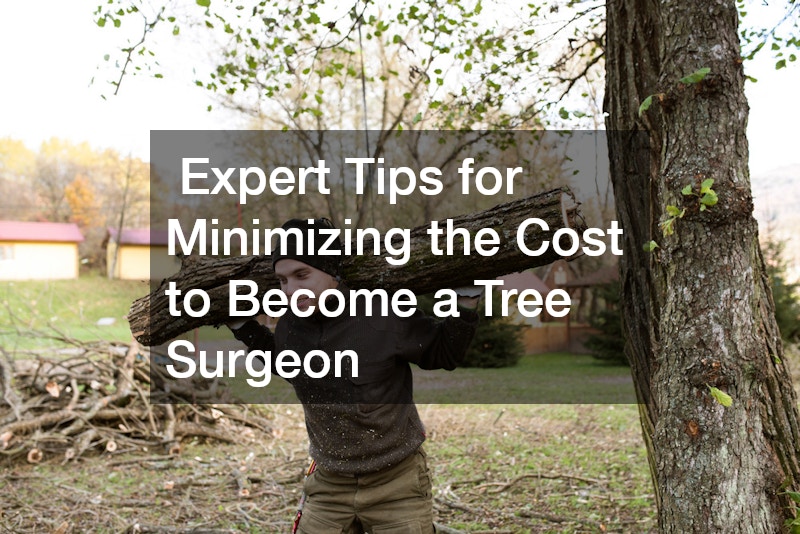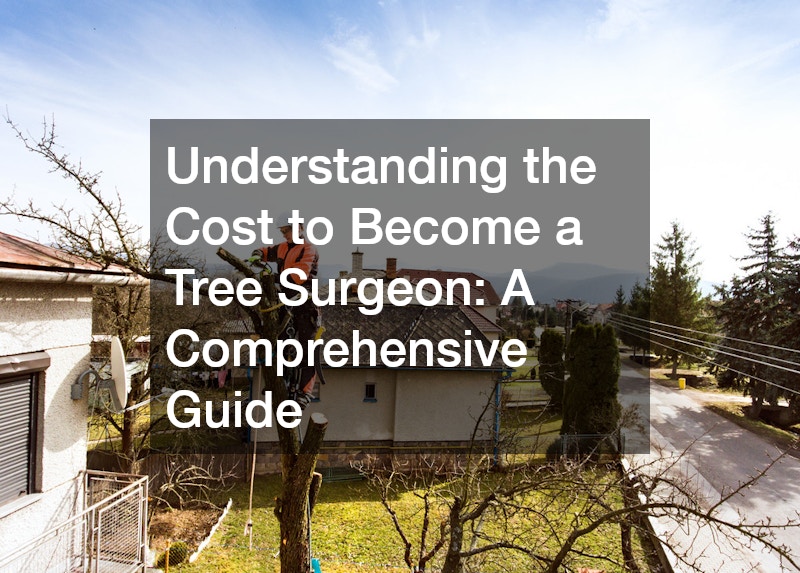
Becoming a tree surgeon, or arborist, is a rewarding career for those who enjoy working outdoors and have a passion for nature. However, one important factor to consider before pursuing this path is the cost to become a tree surgeon. There are various expenses involved, from training and certification to purchasing equipment and insurance.
This comprehensive guide will explore the key costs and provide tips on how to manage them efficiently.
1. Education and Training Costs
The first step in becoming a tree surgeon is obtaining the necessary education and training. While formal university degrees are not required for this profession, specialized courses and certifications are essential. These courses cover important skills such as tree biology, pruning techniques, disease diagnosis, and the safe use of tools and machinery.
Training costs vary depending on the provider and the level of expertise you wish to achieve. Basic entry-level courses can range from £500 to £1,500, while more advanced courses, including chainsaw operation and arboricultural certifications, can cost anywhere from £1,500 to £3,000. Some organizations also offer apprenticeships, where you can gain practical experience while working alongside professionals, potentially reducing costs.
Certification Costs
In addition to training, tree surgeons must obtain certain certifications to operate legally and safely. The most common certifications are issued by organizations such as the National Proficiency Tests Council (NPTC) and Lantra. These certifications demonstrate your competence in using chainsaws, climbing trees, and performing aerial rescue operations.
The cost of certification exams can range from £300 to £1,000 depending on the number of modules required. For example, basic chainsaw certification might cost around £350, while more advanced climbing and aerial rescue certifications could cost upwards of £1,000.
2. Equipment Costs
Once you’ve completed your training and certification, investing in high-quality equipment is essential. A tree surgeon’s work involves using a wide variety of tools, and safety gear is crucial due to the inherent risks of the job. Below is a breakdown of typical equipment costs:
Essential Tools and Gear
Chainsaw: One of the most critical tools for a tree surgeon, chainsaws can vary in price depending on quality and brand. A reliable professional-grade chainsaw can cost anywhere from £400 to £1,000.
Climbing Gear: Climbing trees safely requires specialized equipment such as harnesses, ropes, and carabiners. A complete climbing kit can range from £300 to £700.
Protective Equipment: Personal protective equipment (PPE) includes a helmet with a visor, protective gloves, ear defenders, and chainsaw-resistant trousers. A full set of PPE can cost around £200 to £400.
Additional Tools: Tree surgeons often need tools such as pruning shears, pole saws, and stump grinders. These can add another £200 to £1,500 depending on your needs and the scope of the jobs you intend to take on.
3. Insurance Costs
Tree surgery is a high-risk profession that involves working at great heights and using dangerous machinery. As such, having the right insurance is crucial for protecting both yourself and your clients. There are several types of insurance that tree surgeons should consider:
Public Liability Insurance: This covers you in case you cause accidental damage to a client’s property or a member of the public during your work. Public liability insurance typically costs between £300 and £1,000 per year, depending on the level of coverage you choose.
Professional Indemnity Insurance: This covers legal costs if a client makes a claim against you for negligence or substandard work. Professional indemnity insurance can cost around £200 to £500 annually.
Personal Accident Insurance: Given the physical risks associated with tree surgery, personal accident insurance is advisable to protect against loss of income if you are injured and unable to work. This type of insurance typically costs £200 to £400 annually.
4. Ongoing Costs and Maintenance
After covering the initial training, certification, and equipment expenses, there are ongoing costs associated with maintaining your equipment and business operations. For example:
Equipment Maintenance: Chainsaws and other tools need regular servicing to remain safe and efficient. Maintenance costs can range from £100 to £300 per year, depending on usage.
Fuel and Travel: Tree surgeons often need to travel between job sites, which involves fuel costs. Depending on how far you need to travel for jobs, annual fuel expenses could range from £500 to £1,500.
Training Refreshers: Certifications may need to be renewed, and additional training might be required to stay up-to-date with industry standards. Refresher courses and advanced certifications can add to your ongoing professional costs, ranging from £200 to £1,000 annually.
5. Business Start-up and Marketing Costs
If you’re planning to work independently or start your own tree surgery business, there will be additional costs associated with running a business. These include:
Licenses and Permits: Depending on your location, you may need to apply for specific permits to work as a tree surgeon. These can cost around £100 to £500, depending on local regulations.
Marketing and Branding: Building a successful tree surgery business requires attracting clients through effective marketing. This might involve creating a website, printing business cards, and advertising online or in local directories. Marketing expenses can vary widely, but you should budget between £500 to £2,000 for initial marketing efforts.
Accounting and Tax Services: Managing your finances and paying taxes can become complicated as a business owner. Hiring an accountant to handle your bookkeeping and tax filings can cost anywhere from £300 to £1,000 annually.
Conclusion
Understanding the cost of becoming a tree surgeon involves factoring in several expenses, including training, equipment, insurance, and ongoing maintenance. While the initial investment may seem high, the potential rewards of a fulfilling career in tree surgery make it a worthwhile pursuit. By carefully planning and budgeting for these costs, you can ensure a smooth transition into the profession and set yourself up for long-term success.
By mastering the skills required, investing in quality equipment, and maintaining proper certifications and insurance, you’ll be well-prepared to embark on a successful and rewarding career as a tree surgeon.
.





